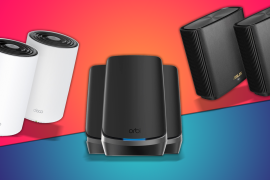Best robot vacuum cleaners in 2025 to keep your floors clean
Clean your carpets and hard floors with the best robot vacuum cleaners around right now
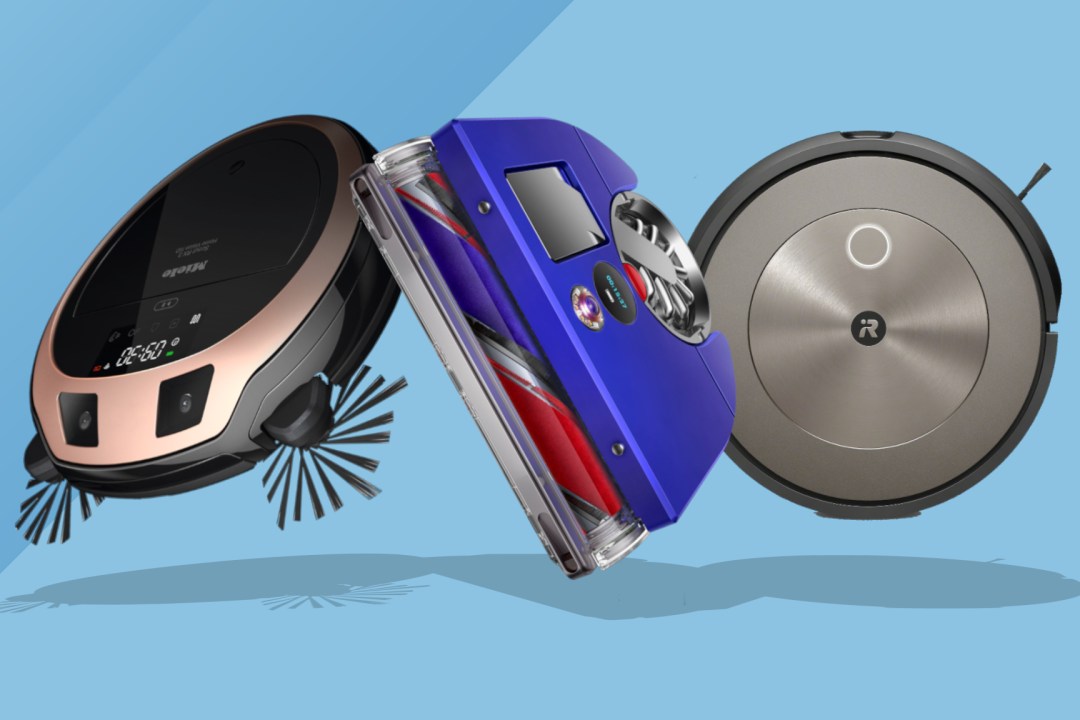
Is your home full of dust, dog hair and gunk? Running the vacuum cleaner over the floors is just too much of a hassle? One of the best robot vacuum cleaners could be the answer.
Robo vacs will keep your house looking spotless, and you’ll barely have to do any work – just empty it every now and then, and you’ll have mastered basic personal hygiene with minimal effort…
OK, so they aren’t just for slobs that can’t be bothered to clean up, but a robot vac will keep dust down to a minimum and could help you breathe easier too. Picking the right one can be a bit tricky, though – that’s why we’ve tested the latest models to ensure you choose the best.
The Eufy X10 Pro Omni (buy now) is a robot vacuum that does proper mopping as well, it really does do it all. The combination of sensors and a forward-facing camera means it navigates really well too.
The iRobot’s J9+ (buy now) is its smartest, most powerful vacuum yet, designed for large homes and pets. With a three-stage system, dual brushes, and a self-emptying base, it customises cleaning using iRobot OS 7.0.
The Dyson 360 Vis Nav (buy now) combines features from its stick vacs, offering strong power and 65 minutes of battery life. It navigates well under furniture and adapts to surfaces but it’s not perfect and very expensive.
The Tapo RV30 Plus (buy now) is an affordable robot vacuum featuring a single wide mop cloth and 4200Pa suction. It handles 20mm level changes, with a 400ml dust bin and 300ml water reservoir. Best of all find it often discounted.
The Ultenic T10 Pro (buy now) offers a lot for its price, including a mop and 360° Lidar navigation, but its mopping function is weak, and it struggles with some navigation tasks despite having strong suction and a large dust bag.
The Miele Scout RX3 Home Vision HD (buy now) is a sleek, 85mm-high robot vacuum with cameras for navigation but no mop or emptying station. It’s noisy, stops when low on battery, and its app is less intuitive.
The best robot vacuum cleaners you can buy today:
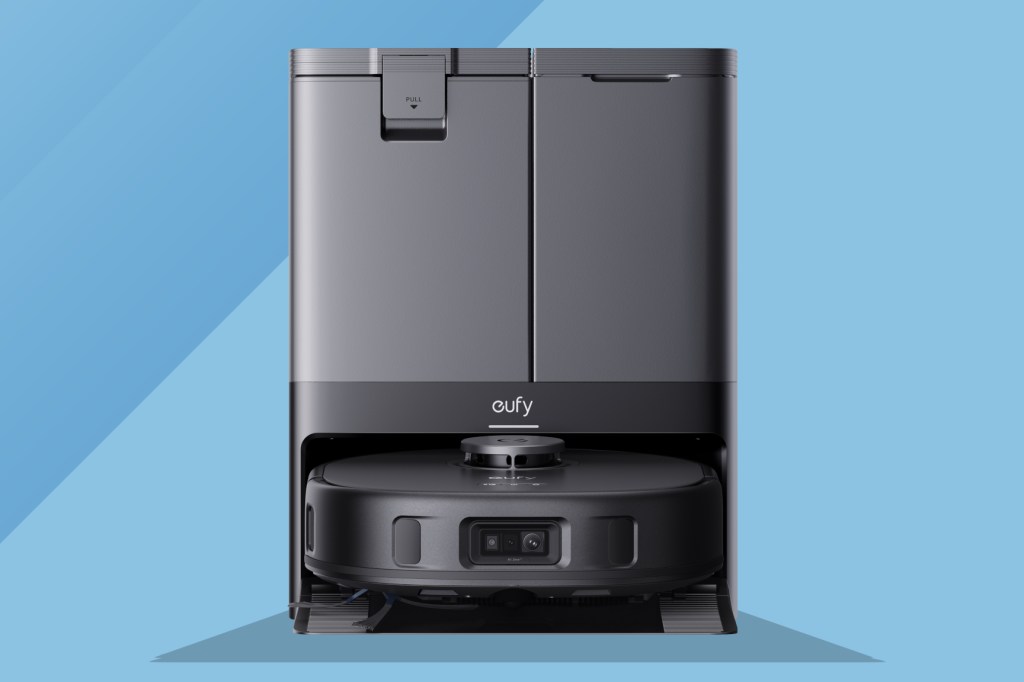
1. Eufy X10 Pro Omni
Stuff Verdict
Finally a robot vacuum that does proper mopping as well, the Eufy X10 Pro Omni X10 Pro really does do it all. The combination of sensors and a forward-facing camera means it navigates really well too.
Pros
- AI navigation works really well
- Excellent mopping and vacuuming
Cons
- On the expensive side
- Large base station
| Eufy X10 Pro Omni specs | |
|---|---|
| Type | Vacuum + mop |
| Connectivity | App, Alexa, Google |
| Battery life | 3hrs (2hrs with mop) |
| Dimensions | 353x327x114mm, 4.1kg |
This new Eufy combines the serious mopping of the X9 Pro with the detangling smarts of the X8 Pro, ups the suction power to 8000Pa, and adds a 2.5L emptying station that should take two months to fill up. It has a pair of pentagonal mops that rotate at 180rpm and apply 1kg of pressure to scrub stains, or lift by up to 12mm when it comes across a carpet.
The vac itself isn’t all that hefty, but its base station is a big beast because it hosts two large water tanks – one for clean water and another for the dirty stuff – as well as the dust bag.
Is it any good?
Eufy named it Omni for good reason, because the X10 Pro really does do it all. Before getting its pads dirty my review vac did a quick mapping run, using Lidar to find its way around and assigning numbers to each room it encountered.
It’s a powerful vacuum cleaner and the mopping is on a par with a human pushing a mop pretty vigorously. Crucially it automatically empties its dust box and cleans and dries its pads – so you could set it to vacuum regularly and mop every seven days, yet not need to tend to it for weeks.
Cleaning performance is the headline feature, then, but there’s also some clever stuff going on behind the scenes. It uses sensors plus a forward-facing camera to identify hundreds of household objects and act accordingly. So it’ll clean right up to edges and bump into the legs of dining chairs, but if it spots what it thinks might be a warm present from the dog it’ll give it a wide berth – and send you a notification to tell you what it thinks it’s found. Now that’s useful.

2. iRobot Roomba J9+
Stuff Verdict
iRobot’s J9+ is its smartest, most powerful vacuum yet, designed for large homes and pets. With a three-stage system, dual brushes, and self-emptying base, it customises cleaning using iRobot OS 7.0.
Pros
- Very powerful suction
- Self emptying base is a dream
Cons
- Expensive
- Requires replacement parts over time
| iRobot Roomba J9+ specs | |
|---|---|
| Type | Vacuum only |
| Connectivity | App, Alexa, Google, Siri |
| Battery life | 3hrs |
| Dimensions | 339x338x87mm, 3.4kg |
Heralded by iRobot as its most powerful and smartest robot vacuum yet, the J9+ is designed to clean larger homes and those with furry pets.
It features a three-stage cleaning system and dual rubber brushes, which enable it to automatically detect your floor type and adjust its cleaning power – from sweeping up dust to lifting and removing trapped pet hair from deep carpets. When the cleaning is done, the robot returns to its sleek-looking base, where it empties itself automatically for up to two months.
iRobot OS 7.0 introduces a host of new technologies to the J9+, including Dirt Detective. This feature allows the robot to analyse past cleaning preferences, patterns, and timings, so it can prioritise the dirtiest rooms and customise settings such as suction power and the number of times it cleans each area.
Is it any good?
Setting up the J9+ is super simple: just plug in the base, place the vacuum on it to charge, and download the app, which offers numerous options and settings but is easy to navigate. The J9+ efficiently mapped the upstairs of my house.
My dog, who likes to nap in my office while I work – it’s a dog’s life – is currently moulting, so I was keen to see how the J9+ would handle this space. It avoided his water bowl and toys and managed to pick up all of his fur and dander from the carpet – a great result.
I paired the J9+ with Siri, which was great as I was able to quickly instruct it to clean specific areas (like “under my desk”). I have an average-sized three-bedroom home, but with a young family, there are always things strewn about. I was most impressed with how the navigation avoided all of these – it didn’t even eat any Lego.
I found the J9+ to be very powerful, especially on high suction, and my carpets were just as clean as when I normally put the effort in to do them with my handheld Dyson Pet. And as well as handling the dog hair, it also excelled at keeping the bedroom carpet free of my own wild hair.
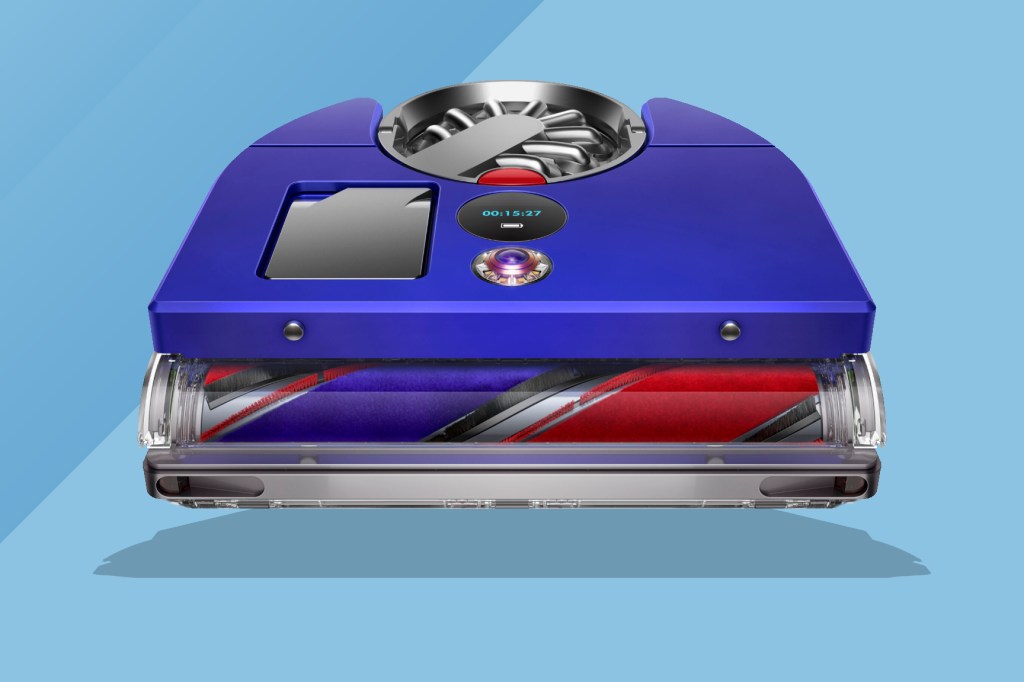
3. Dyson 360 Vis Nav
Stuff Verdict
Combining features from its stick vacs, offering strong power and 65 minutes of battery life. It navigates well under furniture and adapts to surfaces but it’s not perfect and very expensive.
Pros
- Great section and edge cleaning
- Dust cannister is really well designed
Cons
- It’s expensive
- Some maintenance quirks
| Dyson 360 Vis Nav specs | |
|---|---|
| Type | Vacuum only |
| Connectivity | App, Alexa, Google |
| Battery life | 65mins |
| Dimensions | 330x320x99mm, 5kg |
As we said in our Dyson 360 Vis Nav review, the key points from that assessment still hold true when compared to these five rivals – namely that it’s an excellent cleaner with an extremely high price.
Dyson has incorporated features and lessons from its successful stick vacuums into this model. It’s impressively powerful, and battery life is similar to the Gen5detect at up to 65 minutes, although others in this test last much longer.
Many of the issues faced by Dyson’s previous attempts at creating a robot vacuum have been addressed this time around. This cleaner has a low profile, so it can go under furniture, but the wheels are chunky enough to climb rugs and move between surfaces. The full-width brush bar cleans different surfaces effectively, while a side duct opens to redirect suction along walls to clean the troublesome areas next to the skirting.
Is it any good?
What have I learned from a few months of the 360 Vis Nav being in my home? Well, it did get stuck a few times, but this wasn’t a regular occurrence. All robot vacuums require regular maintenance, and the Dyson isn’t too bad in this regard: it asks you to clean its sensors every so often, for example. However, it has a habit of asking for its airway and dirt bin to be cleaned out even when there’s no debris present.
The control screen and Dyson’s app work well, but integration with other systems is fairly poor – I found it wasn’t the easiest to start a clean with Amazon Alexa, for example, unless I used a precise arrangement of words. And there’s no compatibility with Apple Home, which is a shame.
The 360 Vis Nav is a highly competent cleaner for the most part and is as trouble-free as robot vacuums get. But, as I mentioned earlier, there’s one significant issue: the price. There are some quality machines on offer in this test, and unless you’re a real Dyson aficionado, there’s no reason to spend this much on a cleaning companion.
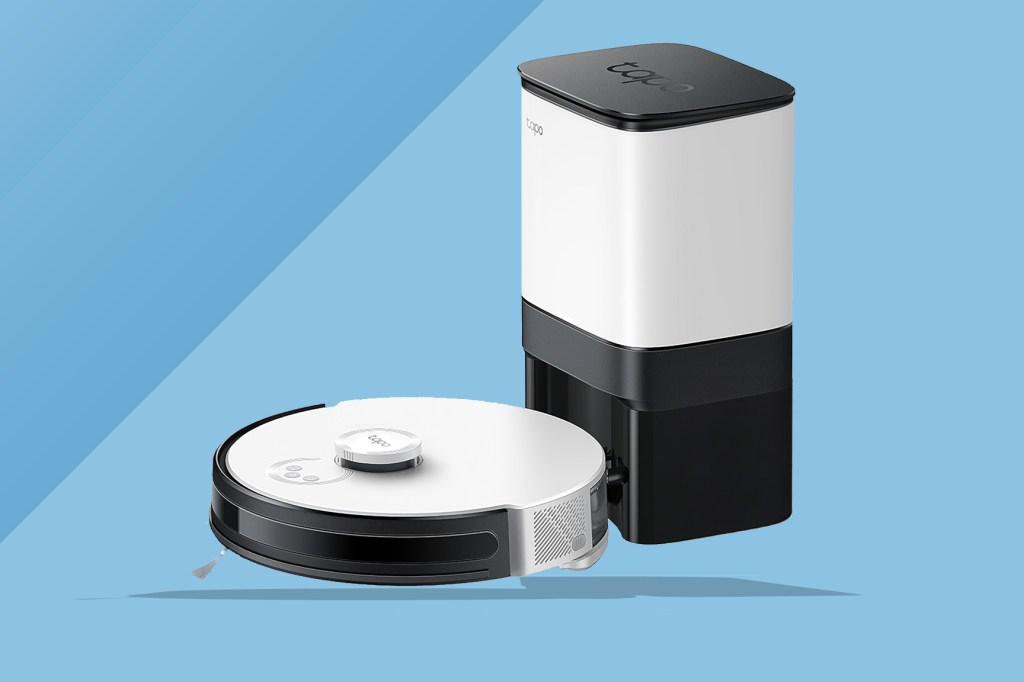
4. Tapo RV30 Plus
Stuff Verdict
An affordable robot vacuum featuring a single wide mop cloth and 4200Pa suction. It handles 20mm level changes, with a 400ml dust bin and 300ml water reservoir. Best of all find it often discounted.
Pros
- Affordable price (without sacrificing features)
- Great app
Cons
- Quite noisy
- Mopping is useful, but not the best
| Tapo RV30 Plus specs | |
|---|---|
| Type | Vacuum + mop |
| Connectivity | App, Alexa, Google |
| Battery life | 3hrs |
| Dimensions | 342x342x95mm, 3.2kg |
TP-Link is best known for its routers, but Tapo is its affordable smart home offshoot, and the RV30 Plus is its latest robot vacuum cleaner. The design feels quite similar to the Ultenic opposite but the mop is made up of just one wide cloth that clips on rather than a pair of rotating pads, with a single roller for whipping up dust when it’s using its 4200Pa of suction power.
It can handle level changes of up to 20mm, with a 400ml dust bin inside for carrying its dirty cargo, plus a 300ml reservoir to moisten the mop.
Its RRP is £599, but the RV30 Plus is often available with massive discounts, even on Tapo’s own website (and you can also get it for even less without the auto-emptying dock).
Is it any good?
Having embarked on a short mapping run, which charted the area it was in but wasn’t thorough enough to do the whole ground floor, the RV30 Plus began a methodical, if slightly noisy, maiden cleaning run.
On its return to base, it tried to take a shortcut and got baffled by the forest of chair legs under the dining table. Eventually, it made its way out the other side and seemed to be heading for HQ… before turning back to bump into the furniture again. What should have taken 30secs lasted 10 times as long.
Even though it hadn’t quite vacuumed everywhere, I could see in the app that the Lidar mapping was impressive and it had split the space into separate rooms. It also showed me the spots it had missed, so I quickly created a zone and it set about cleaning them in about 5mins – much more efficient than doing the whole room again. The app can store up to three maps and you can set no-go zones as well as target areas.
Once satisfied with the vacuuming, I set the Tapo mopping. The app doesn’t have a separate mode for this, but if the mop cloth is attached it’ll automatically do both. The floor was left shiny and slightly wet, with the pad picking up loose dirt, but it doesn’t scrub or apply any pressure so there’s a limit to how clean your floors are going to get.

5. Ultenic T10 Pro
Stuff Verdict
Offering a lot for its price, including a mop and 360° Lidar navigation, but its mopping function is weak, and struggles with some navigation tasks despite having strong suction and a large dust bag.
Pros
- Compact emptying base
- Great price
Cons
- Requires vacuum bags
- Mopping isn’t that effective
| Ultenic T10 Pro specs | |
|---|---|
| Type | Vacuum + mop |
| Connectivity | App, Alexa, Siri |
| Battery life | 3hrs 20mins |
| Dimensions | 350x350x100mm, 3.9kg |
The Ultenic T10 Pro looks too good to be true. While the Tapo RV30 Plus sometimes needs a sale or voucher code to get the price down to £400 or less, that’s the standard asking price for the T10 Pro… yet it still comes with a mop and a 3.3L emptying station to decant dust into, plus it uses 360° Lidar to navigate – hence the shiny turret on top.
So what’s the catch? Like the Tapo it only has one brush, but every time you want to use the mop with this one you need to clip the two rotary pads onto the underside and fill up the reservoir, then empty and clean everything afterwards.
Is it any good?
I set the T10 Pro going straight out of the box – and after turning around a couple of times to take in its surroundings, off it went around the perimeter of the room, before vacuuming in a structured manner that made sense, adjusting only when it hit an obstacle. When it saw the doorway into the hallway coming up, it intelligently turned and stayed in the room. It struggled slightly to mount my 15mm hearth, but did a surprisingly good job of navigating the chair legs that caused the poor Tapo such issues.
As I fired up the Ultenic app for the first time, it talked me through the pairing process (although at times the vac piped up as well, which was a bit overwhelming). Through the app I could see it had missed a spot, so I put it down to finish the job. This confused the robot and it started to draw a whole new map as it cleaned; and when I told it to recharge it returned to where I’d plonked it rather than seeking out the base station – even though it was nearby.
The 4000Pa of suction does a great job of sucking up general carpet detritus, and with such a large dust bag you can empty it every couple of months rather than once a week… but you can’t say the same about its mopping performance. In fact, I’d barely call it mopping. Much of the floor remained dry and the pads themselves were only slightly wet; they picked up a bit of extra dirt but didn’t do much. You’re better off just using this one as a vac.
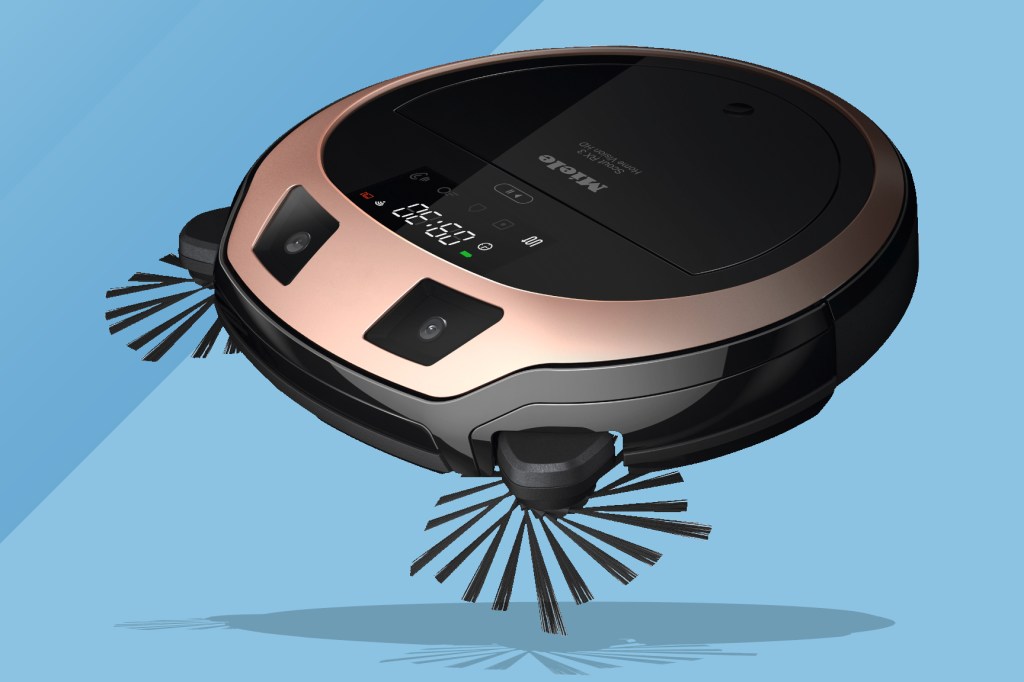
6. Miele Scout RX3 Home Vision HD
Stuff Verdict
The Miele Scout RX3 Home Vision HD is a sleek, 85mm-high robot vacuum with cameras for navigation but no mop or emptying station. It’s noisy, stops when low on battery, and its app is less intuitive.
Pros
- Sleek looks
- Great at cleaning
Cons
- Very loud
- Doesn’t automatically return to base on low power
| Miele Scout RX3 Home Vision HD specs | |
|---|---|
| Type | Vacuum |
| Connectivity | App, Alexa |
| Battery life | 1hr 30mins |
| Dimensions | 354x354x85mm, 3.2kg |
With no mop to accommodate, the Miele Scout RX3 Home Vision HD is the most low-riding robo vac on test at 85mm high, which means it can clean the places that others can’t reach. In its rose gold coat with subtle copper-coloured metallic accents, it’s better-looking too – more Dolce & Gabbana than Duracell. The base station is similarly petite, but that’s because it doesn’t double as an emptying station – it’s just for charging.
The Miele has two pairs of swing-out side brushes (one for hard floors, the other for carpets) and navigates using cameras rather than Lidar, which you can tap into using the app to check on progress – you can even steer it using onscreen controls. That also means it doubles as a basic security camera on wheels, although the video feed you see through the app is pretty grainy, so don’t expect to rely on it in court.
Is it any good?
Although it was on its lowest setting, I was struck by how much noisier the Miele was than the Eufy, despite both boasting around 4000Pa of suction. It seemed to do a thorough job of vacuuming (although without an emptying station, you have to keep an eye on the dust box), even under and around furniture.
When it came to my hearth test it easily dealt with the step-down and had no trouble with the forest of chair legs either, but it wasn’t as easy to track progress in the app as it was with the Eufy and Tapo – and when the battery started to run low the Miele just stopped where it was. Not exactly smart behaviour…
So the cleaning performance is up there, and I like that I can see through the front-facing camera, but I would expect more from such a premium model. Miele does make a Scout RX3 Runner, which is essentially the same model without the camera and voice control, and costs a chunk less… but you’re still not getting a mop, an emptying station or no-go zones. For the same money, you could buy a secondhand Henry.
How to buy the best robot vacuum cleaner for you
Want to buy the best robot vac but don’t know where to start? Here are a few things you’ll need to keep in mind.
Consider your own living space carefully before focusing too much on specific features. For instance, if your home has hard flooring throughout, you might need a vacuum model equipped with a durable and effective mop function to handle the cleaning efficiently. However, if your floors are primarily plush carpets, you would be better served by a model that is specifically designed for powerful vacuuming, as these are better suited to deep-cleaning carpet fibres.
If you share your home with one or more pets, it’s important to select a vacuum that offers strong suction power and brushes specifically engineered to handle pet hair. Ideally, look for models that include pet-friendly features such as specialised brushes and locks to prevent pets and children from interfering with the vacuum’s operation.
Automating your cleaning routine can significantly reduce the amount of manual effort required, making it a major advantage. However, this benefit is contingent upon the sophistication of the robot vacuum you choose. Ensure the model you select has advanced features like object recognition and obstacle detection, which allow it to navigate your home more intelligently and efficiently.
If you’re working with a limited budget, it’s wise not to settle for an outdated model. Robot vacuums have seen rapid advancements in technology, and investing in a budget-friendly, contemporary model, such as those from Ultenic or Tapo, may offer better performance and value than holding onto an older, less effective model.
How we test the best robot vacuum cleaners
When testing robot vacuum cleaners, we start by evaluating how each model works in different living spaces. For instance, we assess whether a vacuum is best for homes with hard floors or plush carpets. Hard floors might benefit from advanced mopping features, while plush carpets might need powerful vacuum-only options. For pet owners, we check for strong suction, specialised brushes for pet hair, and features like pet locks to ensure safety.
Automation and intelligence are also key factors in our testing process. We examine how well the vacuum minimises user intervention with smart features like object recognition and obstacle detection. This ensures the vacuum can navigate around furniture and avoid potential hazards efficiently. We also evaluate how well the vacuum manages its cleaning routines autonomously, including features like automatic dustbin emptying and self-cleaning.
Budget is another consideration. Newer, affordable models like the Ultenic and Tapo above often offer competitive features that may surpass older, pricier options. We test each model across various surfaces and scenarios to determine how effectively it handles different floor types, navigates obstacles, and maintains cleaning routines. This comprehensive approach helps us identify which models offer the best value and performance for diverse user needs.


